Bookworm
Published in Book Reviews, Issue 3 (May/June 2012), Reviews, Volume 20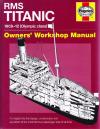 The forthcoming ‘decade of centenaries’ looks like being a busy time for publishers. Within that decade, the centenary of the Easter Rising seems to be getting singled out for particular attention.
The forthcoming ‘decade of centenaries’ looks like being a busy time for publishers. Within that decade, the centenary of the Easter Rising seems to be getting singled out for particular attention.  March saw the launch (in the GPO!) of the ambitious ‘16 Lives’ series, published by O’Brien Press. The first titles in the series (James Connolly, Michael Mallin and Joseph Mary Plunkett) will be reviewed in a forthcoming issue of History Ireland. In the meantime, New Island have launched a series of their own, ‘1916 in Focus’, of which the first title is Paul O’Brien’s intriguing Crossfire: the Battle of the Four Courts, 1916 (New Island, 126pp, Ä12.99, ISBN 97818484011297), which looks at (according to the blurb) ‘some of the fiercest fighting of the 1916 Rising’: the ferocious urban warfare around the Four Courts and in north inner-city Dublin. Speaking of 1916, Mercier Press have also launched a series entitled ‘Irish Revolutionaries’. The first of these is a new edition of the only biography to date of one of the lesser-known signatories of the 1916 Proclamation: William Henry’s Éamonn Ceannt: supreme sacrifice (Mercier Press, 221pp, Ä14.99, ISBN 9781856359566), originally published in 2005. It must be said, however, that the forthcoming decade of centenaries is not just about the Easter Rising. James Curry’s Artist of the Revolution: the cartoons of Ernest Kavanagh (1884–1916) (Mercier Press, 128pp, Ä12.99, ISBN 9781856359481) is both a biography of its subject and a catalogue of his work. Kavanagh was
March saw the launch (in the GPO!) of the ambitious ‘16 Lives’ series, published by O’Brien Press. The first titles in the series (James Connolly, Michael Mallin and Joseph Mary Plunkett) will be reviewed in a forthcoming issue of History Ireland. In the meantime, New Island have launched a series of their own, ‘1916 in Focus’, of which the first title is Paul O’Brien’s intriguing Crossfire: the Battle of the Four Courts, 1916 (New Island, 126pp, Ä12.99, ISBN 97818484011297), which looks at (according to the blurb) ‘some of the fiercest fighting of the 1916 Rising’: the ferocious urban warfare around the Four Courts and in north inner-city Dublin. Speaking of 1916, Mercier Press have also launched a series entitled ‘Irish Revolutionaries’. The first of these is a new edition of the only biography to date of one of the lesser-known signatories of the 1916 Proclamation: William Henry’s Éamonn Ceannt: supreme sacrifice (Mercier Press, 221pp, Ä14.99, ISBN 9781856359566), originally published in 2005. It must be said, however, that the forthcoming decade of centenaries is not just about the Easter Rising. James Curry’s Artist of the Revolution: the cartoons of Ernest Kavanagh (1884–1916) (Mercier Press, 128pp, Ä12.99, ISBN 9781856359481) is both a biography of its subject and a catalogue of his work. Kavanagh was 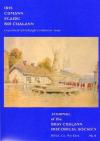 a clerk in the ITGWU, but he also contributed hard-hitting satirical cartoons to a number of labour and nationalist newspapers, which act as a commentary on many of the issues
a clerk in the ITGWU, but he also contributed hard-hitting satirical cartoons to a number of labour and nationalist newspapers, which act as a commentary on many of the issues 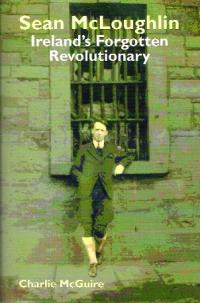 energising Irish political life in the years before 1916. Amongst the most striking (which is also the cover illustration) is one of the Home Rule leader John Redmond standing on the bound and prone figure of a woman—Redmond was adamantly opposed to women’s suffrage—while one of the more notorious is Kavanagh’s depiction of William Martin Murphy as a vulture perched on the gate of his house in Dartry during the 1913 Lockout. Ironically, Kavanagh was shot and killed outside Liberty Hall during the Easter Rising. A reminder that the centenaries aren’t just about Dublin is provided by Dominic Price in The flame and the candle: war in Mayo, 1919–1924 (Collins Press, 368pp, Ä14.99, ISBN 9781848891364). This remarkably thorough study comes with extensive and interesting appendices of original documentation. In similar vein is Diarmuid O’Connor and Frank Connolly’s Sleep, soldier, sleep: the life and times of Padraig O’Connor (Miseab Publications, 156pp, Ä12.99, ISBN 9780957124905), based mainly on the recollections and personal papers of its subject, who was active in the Volunteers and IRA from 1916 onwards, eventually serving in the Free State army, where, amongst other things, he oversaw the execution of Erskine Childers.By way of contrast with the attention devoted to the second and third decades of the twentieth century, sixteenth-century Ireland seems a bit neglected.
energising Irish political life in the years before 1916. Amongst the most striking (which is also the cover illustration) is one of the Home Rule leader John Redmond standing on the bound and prone figure of a woman—Redmond was adamantly opposed to women’s suffrage—while one of the more notorious is Kavanagh’s depiction of William Martin Murphy as a vulture perched on the gate of his house in Dartry during the 1913 Lockout. Ironically, Kavanagh was shot and killed outside Liberty Hall during the Easter Rising. A reminder that the centenaries aren’t just about Dublin is provided by Dominic Price in The flame and the candle: war in Mayo, 1919–1924 (Collins Press, 368pp, Ä14.99, ISBN 9781848891364). This remarkably thorough study comes with extensive and interesting appendices of original documentation. In similar vein is Diarmuid O’Connor and Frank Connolly’s Sleep, soldier, sleep: the life and times of Padraig O’Connor (Miseab Publications, 156pp, Ä12.99, ISBN 9780957124905), based mainly on the recollections and personal papers of its subject, who was active in the Volunteers and IRA from 1916 onwards, eventually serving in the Free State army, where, amongst other things, he oversaw the execution of Erskine Childers.By way of contrast with the attention devoted to the second and third decades of the twentieth century, sixteenth-century Ireland seems a bit neglected. 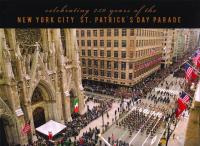 Readers will recall Gerald Power’s recent article on the nobility in Tudor Ireland (HI 20.1, Jan./Feb. 2012).
Readers will recall Gerald Power’s recent article on the nobility in Tudor Ireland (HI 20.1, Jan./Feb. 2012). 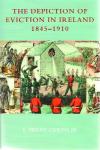 Those who want to know more should consult his full-length study, A European frontier elite: the nobility of the English Pale in Tudor Ireland, 1496–1566 (Wehrhahn Verlag, 215pp, no price given, ISBN 9783865252548).Bookworm was very impressed in the last issue with the increasingly high production standards for local history publications. The trend continues with Chris Reid’s lavish Heirlooms and hand-me-downs: stories from Nicholas St., Bride St., Bride Road and the Rosser, Dublin (Dublin City Council, 235pp, no price given, ISBN 97809554281). This arose out of a public art commission carried out by Reid in and around the Iveagh Trust buildings in Dublin’s south inner city. Reid interviewed many of the residents in the area, and twenty plaques containing a selection of short testimonies were put up around the area; the book publishes many of the actual interviews to create a striking oral history of the locality. For those readers curious about life in Dublin’s north inner city, O’Brien Press have reissued Paddy Crosbie’s classic memoir Your dinner’s poured out!
Those who want to know more should consult his full-length study, A European frontier elite: the nobility of the English Pale in Tudor Ireland, 1496–1566 (Wehrhahn Verlag, 215pp, no price given, ISBN 9783865252548).Bookworm was very impressed in the last issue with the increasingly high production standards for local history publications. The trend continues with Chris Reid’s lavish Heirlooms and hand-me-downs: stories from Nicholas St., Bride St., Bride Road and the Rosser, Dublin (Dublin City Council, 235pp, no price given, ISBN 97809554281). This arose out of a public art commission carried out by Reid in and around the Iveagh Trust buildings in Dublin’s south inner city. Reid interviewed many of the residents in the area, and twenty plaques containing a selection of short testimonies were put up around the area; the book publishes many of the actual interviews to create a striking oral history of the locality. For those readers curious about life in Dublin’s north inner city, O’Brien Press have reissued Paddy Crosbie’s classic memoir Your dinner’s poured out!
Memoirs of a Dublin that has disappeared 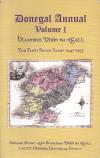 (O’Brien Press, 224pp, Ä9.99, ISBN 9781847173041). Moving back south of the Liffey and out to the suburbs, there is Obelisk: Journal of the Kilmacud Stillorgan Local History Society, the sixth issue of which has recently been published (112pp, no price given, ISBN 9780954986551).
(O’Brien Press, 224pp, Ä9.99, ISBN 9781847173041). Moving back south of the Liffey and out to the suburbs, there is Obelisk: Journal of the Kilmacud Stillorgan Local History Society, the sixth issue of which has recently been published (112pp, no price given, ISBN 9780954986551). 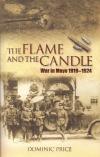 It is a welcome (and relatively new) addition to the distinguished ranks of Ireland’s local history journals. The current issue contains articles on a surprising range of topics, from ‘The story of a German orphan’ who found a new life in Ireland just after World War II to an account of an assassination attempt on Michael Collins in Stillorgan a mere four days before he met his end at Béal na Bláth, and, last but not least, a study of a forgotten brewery in Stillorgan that had confidently assured the thirsty in 1820 that they were about to unleash ‘a strong ale of very superior quality’. Finally, from the new to the old. After all of these books on Dublin, Bookworm, with his Donegal connections, was delighted to come across an anthology of one of Ireland’s more venerable local history publications: the Donegal Annual Volume I: the first seven years, 1947–1953 (County Donegal Historical Society, 538pp, Ä40 hb/€25 pb, ISBN 9780956322753). These early editions were exceedingly rare, it seems, and this is the first of a planned series of anthologies aimed at filling the gap. Alongside some serious scholarship (in both official languages) on a vast range of topics, the advertisements in this facsimile compendium give a glimpse of the 1940s and 1950s as well. After reading articles on music, crannogs, seventeenth-century naturalists and the diocese of Raphoe, readers could rest easy knowing that McDonough’s of Carndonagh were ‘providers of everything for everybody’, and that Bartley Ramsey’s of Letterkenny modestly claimed that
It is a welcome (and relatively new) addition to the distinguished ranks of Ireland’s local history journals. The current issue contains articles on a surprising range of topics, from ‘The story of a German orphan’ who found a new life in Ireland just after World War II to an account of an assassination attempt on Michael Collins in Stillorgan a mere four days before he met his end at Béal na Bláth, and, last but not least, a study of a forgotten brewery in Stillorgan that had confidently assured the thirsty in 1820 that they were about to unleash ‘a strong ale of very superior quality’. Finally, from the new to the old. After all of these books on Dublin, Bookworm, with his Donegal connections, was delighted to come across an anthology of one of Ireland’s more venerable local history publications: the Donegal Annual Volume I: the first seven years, 1947–1953 (County Donegal Historical Society, 538pp, Ä40 hb/€25 pb, ISBN 9780956322753). These early editions were exceedingly rare, it seems, and this is the first of a planned series of anthologies aimed at filling the gap. Alongside some serious scholarship (in both official languages) on a vast range of topics, the advertisements in this facsimile compendium give a glimpse of the 1940s and 1950s as well. After reading articles on music, crannogs, seventeenth-century naturalists and the diocese of Raphoe, readers could rest easy knowing that McDonough’s of Carndonagh were ‘providers of everything for everybody’, and that Bartley Ramsey’s of Letterkenny modestly claimed that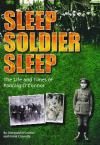 ‘in the history of high class drapery and footwear for service and value we cannot be surpassed’. Who could say no to that? HI
‘in the history of high class drapery and footwear for service and value we cannot be surpassed’. Who could say no to that? HI
















